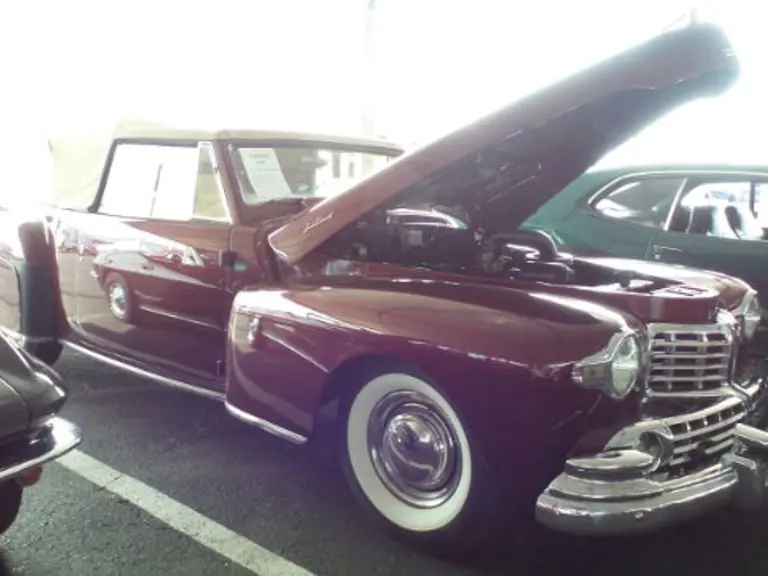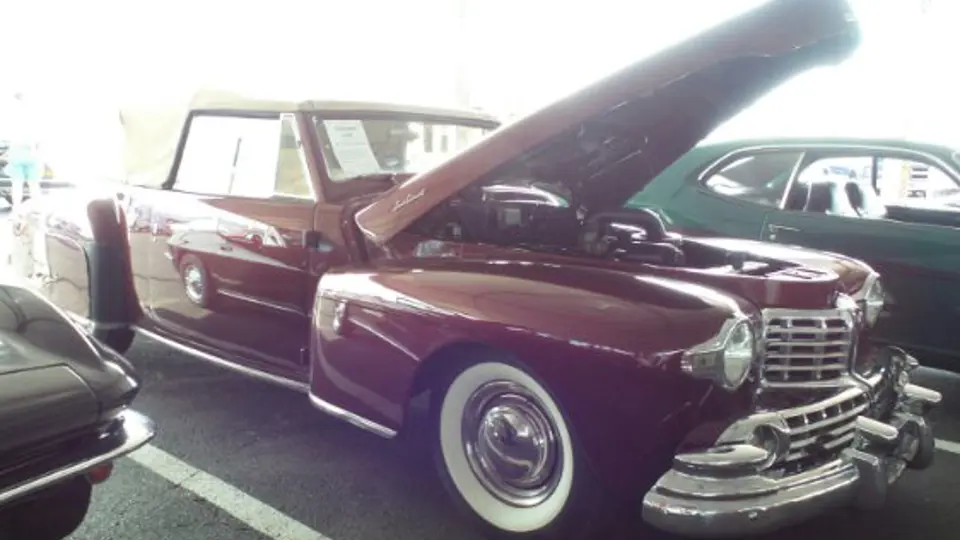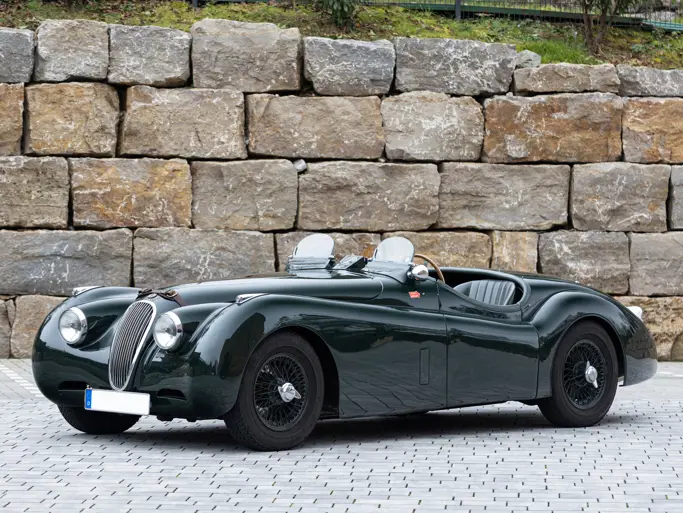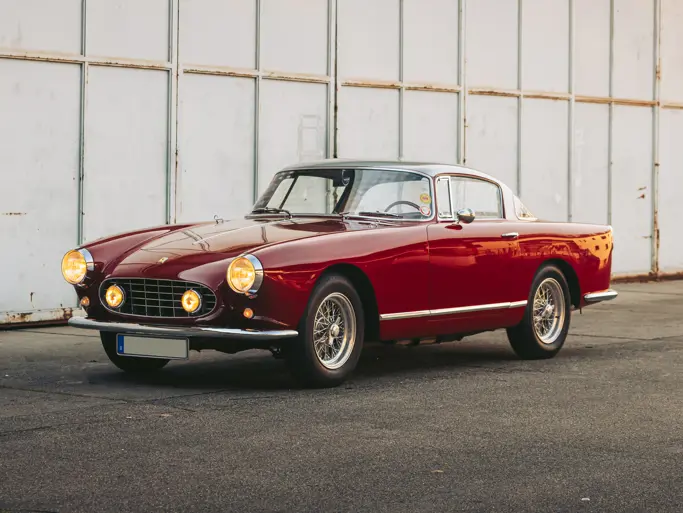The lovely Lincoln Continental was completely the product of Edsel Ford’s instinct and talent. Where his father, Henry, demanded mechanical durability through simplicity, Edsel Ford knew that great design made great cars. With handsome proportions and dashing style that culminated in the trademark rear-mounted spare tire (years after such things had vanished from production cars), the Continental was a symbol of success that lasted for decades. The 1946-48 Continentals were also the first post-war cars included in the CCCA’s roster of Full Classics, indicative of their quality and trend-setting design. Today they remain desirable cars that have found homes in the finest collections in the world.
Someone has already invested quite a bit of time and money in this ’47 Continental Cabriolet. It offers the prospective buyer a relatively recent paint job, tan leather interior, a tan canvas top, and recently refreshed mechanicals. The maroon paint is likely from a late-model palette, with a bit of metallic in the finish, but it looks excellent on the Lincoln’s curvaceous body. The paint itself is two-stage urethane, making it easy to shine and durable, and while it looks decent as-is, a professional wet-sand and buff would make this Continental dazzling.
The bumpers appear somewhat dull in photos, but are actually in very good condition; it’s just a film that will clean up nicely with an afternoon of polishing, as will almost all the trim. Only the lower grille shows some light pitting on the horizontal surfaces, as does the original hood ornament (both areas are shown in the photos).
The tan leather interior is glove soft and stitched in the original patterns, including the door panels and back seat area. This car also carries perhaps the nicest original red plastic Continental steering wheel we’ve ever seen, with no cracks and all the original details intact. New carpets have been competently stitched and installed, and the dash has been painted to match the body. Of note, the hydraulic power windows are fully functional, although the radio and clock are not, as is common on cars of this vintage. All the unique knobs and handles are intact and the door latches work as they should, springing the doors open with a touch of a button, inside or out. This car is also equipped with a heater and defroster, and a correct tan convertible top.
It is undoubtedly the 292 cubic inch V-12 under the hood that convinced the Classic Car Club of America to add the Continental to their roster. Thanks to a recent rebuild by David Heinrichs of Heinrichs Vintage Car Shop, this one runs beautifully and still uses the original carburetor and a rebuilt front-mounted distributor that was Henry Ford’s contribution to the Continental’s specifications. The block and heads wear correct green paint, and the original generator has been rebuilt and charges well, thanks to a new voltage regulator. Other new equipment includes the battery, exhaust system, brakes and clutch, which connects to a three-speed manual transmission and fully functional overdrive. Five original 15-inch steel wheels wear correct trim rings and hubcaps, as well as a set of L78-15 Coker white whitewall radials.
This 1947 cabriolet isn’t a perfect Continental, but it is presentable and mechanically sorted. The paint, interior and top are recent, and the engine has been freshened, eliminating the biggest worry about these cars. All the important, expensive work has been executed, and all that remains are details that will easily add considerable value. These are handsome, comfortable cars, and with the overdrive, it cruises effortlessly at modern highway speeds. This particular Continental offers a talented hobbyist the opportunity to own a Full Classic V-12 Lincoln convertible that needs a little sweat equity. Don’t miss this chance; this is a lot of car for the money.



 | Auburn, Indiana
| Auburn, Indiana


